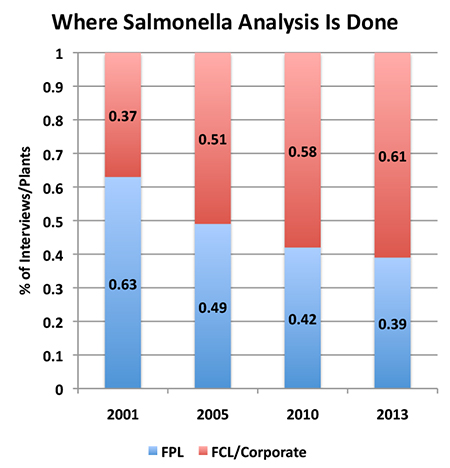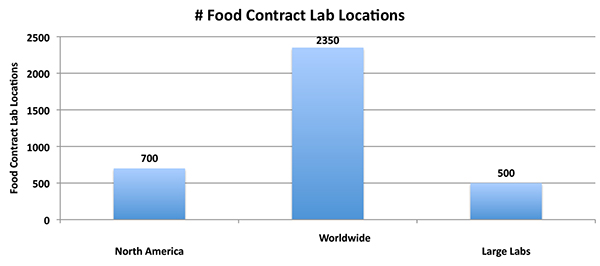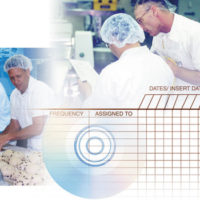As covered in last week’s blog, the 40,000 food plants worldwide are finding the running of in-plant food labs to be increasingly complex. Faced with the Food Safety Modernization Act (FSMA) and the possible requirement of lab accreditation, particularly for analysis of food safety compliance samples, more and more food companies are questioning the role and scope of their food plant labs (FPLs)—and considering alternatives.
One alternative is to utilize a food contract lab (FCL) for all compliance samples while continuing to analyze other food safety samples at the FPL. Another is to shut down the food plant lab entirely and utilize FCLs for all food safety test analysis. Yet a third is to have a food contract lab locate a ‘lab-in-a-box’ just outside the food plant or to have the FCL take over the food plant lab operations.
Strategic Consulting, Inc. (SCI) has been monitoring food safety testing for over 15 years, and has documented this shift in business from FPLs to outside labs. Based on data from SCI’s thousands of interviews with food plant QA/QC managers, there is a clear trend in food plants to send samples outside for analysis. The following chart is based on SCI interviews with U.S. food plants regarding where Salmonella samples are analyzed. In 2013, 61% of U.S. food plants sent Salmonella samples outside for analysis. Just 12 years ago, in 2001, the reverse was true, and 63% of the U.S. food plants did the analysis at food plant labs.
 At one point all food plants had laboratories. In the 1970s, a few entrepreneurs began what has now grown into a thriving FCL industry. Many of the early entrepreneurs established outside laboratories with their own expertise as the foundation. Acting as subject matter experts and consultants, these scientist-entrepreneurs provided knowledge that helped their food industry clients solve food safety issues. Many of the early food contract labs were microbiology-based, due to industry needs and the lower cost of entry for micro versus other types of testing. These early FCLs grew through personalized service, expert consulting, scientific proficiency and strong client relationships. Over time, FCLs added basic chemistry services as necessary to support the needs of food company clients.
At one point all food plants had laboratories. In the 1970s, a few entrepreneurs began what has now grown into a thriving FCL industry. Many of the early entrepreneurs established outside laboratories with their own expertise as the foundation. Acting as subject matter experts and consultants, these scientist-entrepreneurs provided knowledge that helped their food industry clients solve food safety issues. Many of the early food contract labs were microbiology-based, due to industry needs and the lower cost of entry for micro versus other types of testing. These early FCLs grew through personalized service, expert consulting, scientific proficiency and strong client relationships. Over time, FCLs added basic chemistry services as necessary to support the needs of food company clients.
According to Strategic Consulting’s newest market research report, Food Contract Lab Report, there are 2,350 FCLs worldwide and they generated revenues of more than $3.0 billion in 2013. In fact, over the past five years, the food contract lab industry has shown a compound annual growth rate (CAGR) that exceeds overall growth in the food safety testing market. Clearly, FCLs are taking market share from the food plant labs.
 FCL Market
FCL Market
The FCL growth rate varies slightly by geographic region and business area (microbiology, chemistry, services) but frankly, all areas are growing well.
FCL Geographic Region Analysis
• Europe is the largest region based on total FCL revenues, but is showing slower growth than other geographic regions. Chemistry revenues remain strong in the EU.
• North America is second in total revenues, but is catching the EU, driven by large increases in microbiology revenues.
• Asia and the rest of the world have the smallest total revenues but the greatest growth potential of the four geographic regions.
FCL Business Area Analysis
• The microbiology business area is second in total revenues but growing quickly, with increases in both routine microbiological and pathogen analysis.
• Chemistry is the largest business area but slowing in growth compared to the other business areas.
• Currently the smallest, the services business area is growing quite quickly due to increasing demand from food companies.
The future for food contract laboratories looks strong, and 5 years out, SCI expects FCLs to have continued their growth in market share. FSMA will push companies outside the U.S. to utilize accredited labs for compliance testing, which will drive rapid growth for FCLs particularly in the markets in Asia and Latin America.



